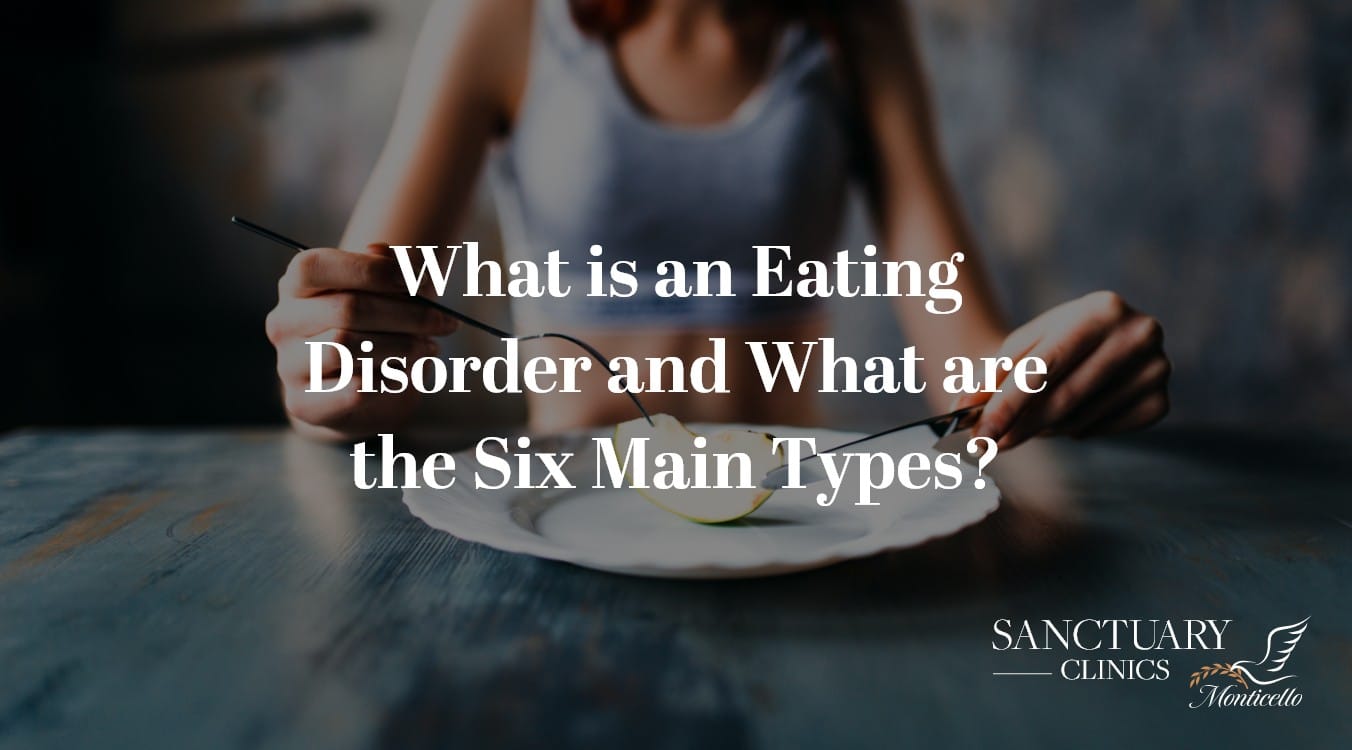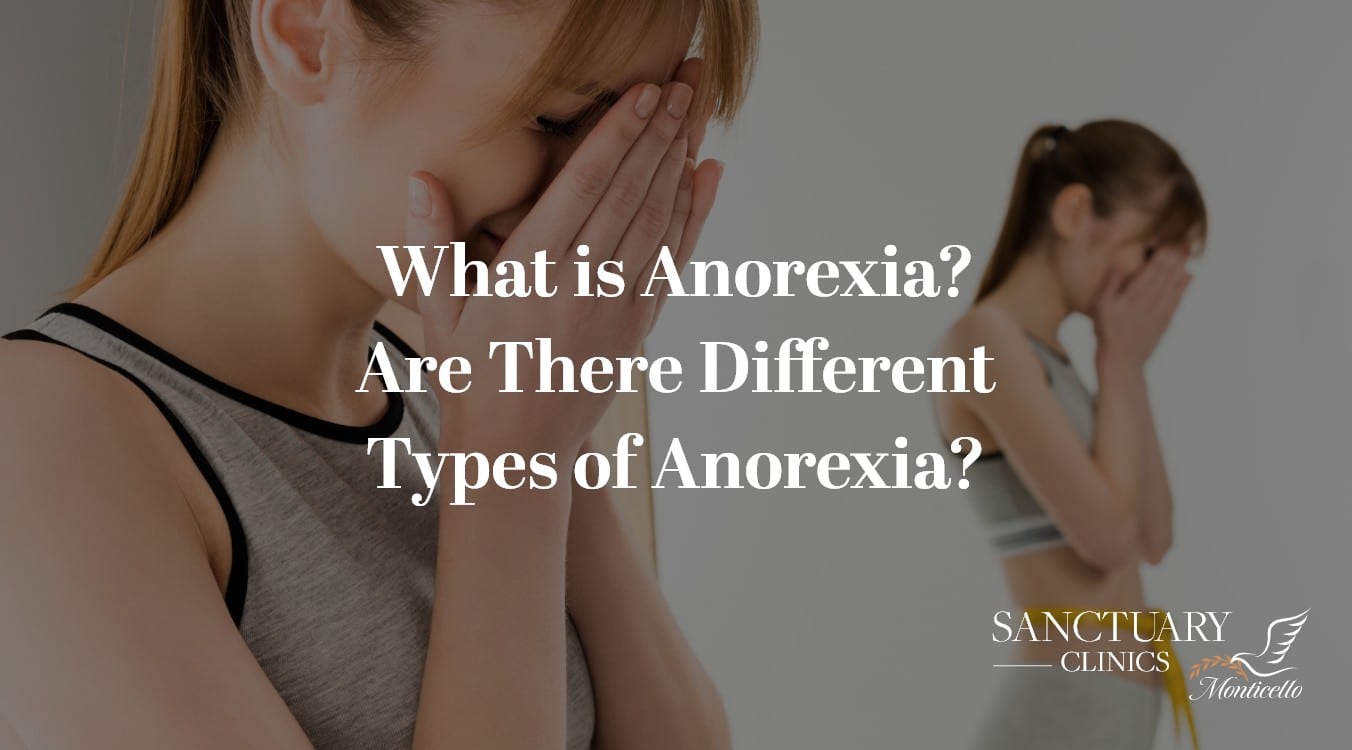An eating disorder is a mental illness which involves compulsions about food and body image. Eating disorders are a chronic (not occasional) condition which require extensive treatment. The six most recognized disorders are Anorexia nervosa, Bulimia nervosa, Binge eating disorder, Pica, Rumination disorder, and Avoidant/restrictive food intake disorder.
What causes an eating disorder?
While no singular cause has been identified for eating disorders, experts believe there are several factors which contribute to their development. Things like genetics; personality traits (perfectionism); peer, cultural, or media ideals; medical and mental issues; brain biology; and modification in a person’s brain chemicals called neurotransmitters are most often associated.
The American Psychiatric Association’s Diagnostic and Statistical Manual of Mental Disorders, fifth edition (DSM-5), identifies six main types of eating disorders.
Get Help Today.
We are here to help you through every aspect of recovery.
Let us call you to learn more about our treatment options.
We are here to help you through every aspect of recovery. Let us call you to learn more about our treatment options.
The six main types of eating disorders
- Anorexia Nervosa
Anorexia nervosa is the most recognized eating disorder. It affects women more than men. It also affects young adults. Signs of anorexia nervosa include a very low body weight, an unreasonable fear of weight gain, severe measures taken to avoid weight gain, body image issues, constantly weight monitoring, restricting calorie intake, fasting and intense dieting, enormous amounts of exercise, binge eating followed by purging, and denial of being underweight.Anorexia nervosa has two subcategories. One subcategory is restricting food, the other is binge eating and purging. Restricting food may be recognized in excessively dieting, fasting, and exercising. Binge eating and purging are, just as the term suggests, consuming a lot of food and then purging it by vomiting, using laxatives, or exercising excessively.If you are suffering with Anorexia nervosa you may also have obsessive, compulsive tendencies, thinking about food and your weight obsessively leading to compulsive behaviors. You may not want to eat in front of others. You may also amass recipes or stockpile food.Anorexia nervosa is extremely dangerous because it is damaging to your body. It can cause thin bones, infertility, brittle hair and nails. If left untreated, it can cause electrolyte irregularities, multi-organ failure, and even death.
- Bulimia Nervosa
Bulimia nervosa is characterized by eating large amounts of food until painfully full, eating often, feeling out of control concerning eating behavior, frequent purging, fear about gaining weight, and concern about body image. Like Anorexia nervosa, it is well recognized, and is most prevalent in women and young adults. The difference between the two is that individuals with Bulimia nervosa are able to maintain a normal body weight.Those suffering with Bulimia nervosa may also experience low self-esteem, dehydration, worn tooth enamel, sore throat, hormonal disturbances, electrolyte imbalances, swollen salivary glands, tooth decay, gut inflammation, and acid reflux. Left untreated, these individuals are at risk of several serious medical issues including stroke and heart attack. - Binge Eating Disorder
Binge eating disorder is very common. Most experienced in teenagers and young adults, individuals with binge eating disorder consume large amounts of food in a short period of time. The difference between this and other disorders is that there are no purging behaviors and no calorie concerns, leading to obesity and all of the problems that brings.Symptoms of Binge eating disorder include not eating in public, eating more food than other people would in a short span of time, feeling out of control regarding food, eating until disturbingly full, bingeing when not even hungry, and feeling intense guilt after they’ve binged.Left untreated, Binge eating disorder sufferers are at particularly higher risk of stroke, heart disease, and type 2 diabetes. - Pica
Pica is an eating disorder that includes eating things which are not food and often times not even eatable. Individuals with Pica feel compelled to eat things like dirt, soap, ice, paper, chalk, pebbles, hair, cornstarch, chalk, wool, fabric, or laundry detergent. Although most often seen in pregnant women, children, and people with iron deficiency, no demographic has been excluded.Individuals struggling with Pica are at extreme risk of internal injury, poisoning, infection, and nutritional issues. Depending on what has been consumed, Pica can also be deadly. - Rumination disorder
Rumination disorder is a newer observable eating disorder where sufferers vomit up chewed and swallowed food, then re-chew it, and either swallow it again or spit it out. Typically, this happens within 30 minutes of the time you’ve eaten. Rumination disorder has been identified in infancy, childhood, and adulthood. Infants typically grow out of the behavior. If it is not resolved during infancy, this disorder can cause malnourishment and severe weight loss, and can lead to death. Children and adults who experience this disorder usually don’t eat much, especially in public. - Avoidant Restrictive Food Intake Disorder
Individuals with Avoidant restrictive food intake disorder become disinterested in food due to its textures, colors, smells, tastes, temperatures, or just a general lack of interest in eating. This disorder usually develops during infancy or in children under the age of seven and continues throughout life. Equally prevalent in men and women, those suffering with Avoidant restrictive food intake disorder may demonstrate symptoms like limiting food intake, avoiding eating with others, weight loss, poor or delayed development with weight and height, nutritional deficiencies, and dependency on supplements. Typically, avoidant restrictive sufferers don’t have issues with body image or obsessions with their weight as those suffering with other eating disorders.
Are there still other eating disorders?
Yes. Some of the lesser-known eating disorders include:
- Purging disorder – individuals who purge using techniques such as vomiting, laxatives, and exercising excessively. They do not binge.
- Night eating syndrome – individuals who wake up at night and eat excessively.
- Orthorexia – individuals who excessively center on healthy eating to an intensity that disturbs their day-to-day lives. Or they are individuals who cannot control their intake of certain kinds of foods. Individuals with this disorder may exclude entire food groups, suspecting they are unhealthy. Their self-worth is dependent on how well they adhere to their self-prescribed diet rules. This can lead to malnourishment, severe weight loss, and difficulty eating in front of others.
- Other specified feeding or eating disorder (OSFED) – individuals who have symptoms of an eating disorder, but who don’t fit into the above categories.
How do I know if I myself or someone I love has an eating disorder?
Eating disorders usually begin with an unhealthy obsession with food, body image and weight, or shape. While symptoms can differ in frequency and severity from one person to the next, the signals are usually pretty clear.
Look for any combination of symptoms like bingeing, purging, excessive exercising, guilt, constantly talking about losing weight, obsession with healthy foods, skipping meals, eating in secret, leaving meals to go to the bathroom, using laxatives, constantly checking the mirror and scale, isolation from friends and family, and depression.
Who is at risk for an eating disorder?
Anyone can develop an eating disorder regardless of their gender, age, socio-economic standing, sexual orientation, race, culture, and/or abilities. Individuals with other challenges such as depression, anxiety, and drug and alcohol abuse, are at a higher risk of developing unhealthy eating habits. Similarly, people who work or participate in activities which produce higher body image or body performance stress (such as modeling, sports, or dancing) are at increased risk. Environment and genetics can also play a part.
Is there treatment available for eating disorders?
Here’s the very good news: eating disorders are highly treatable! If you or someone you love suffers with an eating disorder, treatment from a healthcare professional who has training with eating disorders is vitally important.
Early recognition of your symptoms is essential. An eating disorder is a complicated mental health condition, not just an intermittent issue. A considerable amount of medical and psychological treatment is required to treat and maintain the urges.
The physical impact of an eating disorder can be significant. An eating disorder can cause damage to your teeth, bones, skin, digestive tract, and heart function. You need to take eating disorders very seriously because they can cause severe health complications and even death. Eating disorders have the highest death rate among all mental health disorders.
Don’t let an eating disorder have the last word. Seek treatment today!
At Sanctuary Clinic, we understand what you’re going through and we can help. Our team of mental health professionals understand that treating all of you—mind, body and spirit—will provide the surest path to healing, health and wholeness. Call now to learn more about Sanctuary Clinic. Let us help you take your life back
Get Help Today.
We are here to help you through every aspect of recovery.
Let us call you to learn more about our treatment options.
We are here to help you through every aspect of recovery. Let us call you to learn more about our treatment options.









